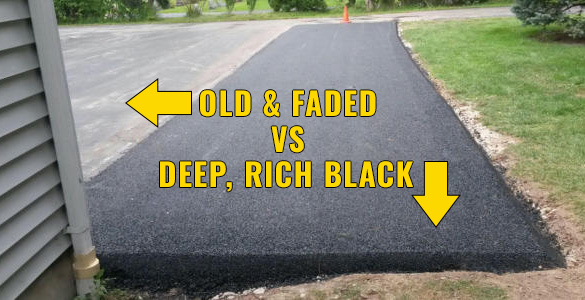Prolong Pavement Life Expectancy: Ingenious Cold Mix Asphalt Sealing
Prolong Pavement Life Expectancy: Ingenious Cold Mix Asphalt Sealing
Blog Article
Cold Mix Asphalt Vs. Hot Mix Asphalt: Which Is Right for You?

Make-up Differences
Cold mix and warm mix asphalts differ considerably in their composition, with distinctive features that impact their performance and applications. Cold mix asphalt is created by emulsifying the asphalt binder with water and an emulsifying agent before blending it with accumulation. This method permits the asphalt to be convenient at reduced temperature levels, making it optimal for short-term fixings and for use in colder climate condition. Warm mix asphalt, on the other hand, is produced at high temperature levels, generally in between 300-350 ° F, which helps to accomplish much better compaction and an extra sturdy last product. The hot mix asphalt production procedure entails heating up the accumulation and asphalt binder individually prior to incorporating them at the asphalt plant.
Furthermore, cold mix asphalt often tends to be less thick and much more versatile than hot mix asphalt. This versatility makes it much better fit for locations with higher degrees of movement, such as driveways or roads with heavy traffic. In comparison, hot mix asphalt is understood for its high longevity and resistance to rutting and cracking, making it a recommended selection for highways and high-traffic roadways where long life is critical.
Setup Process Variances
The procedure of installing cold mix and warm mix asphalt shows significant differences in their needs and treatments. In contrast, warm mix asphalt demands an extra fancy installation procedure. Due to the heating demands, hot mix asphalt setups are typically brought out by specialists with specific equipment, making sure an extra structurally sound and long-term outcome.
Sturdiness and Long Life Variables
When considering asphalt alternatives, longevity and long life are important aspects to examine for long lasting pavement efficiency. Hot mix asphalt (HMA) is recognized for its exceptional durability and long life.
In terms of long life, HMA normally exceeds CMA because of its remarkable strength and resistance residential properties. HMA pavements have a longer service life, calling for less regular repair work and maintenance, which can equate to cost savings in the long run. Additionally, HMA sidewalks are more conveniently customizable to satisfy particular task demands, better improving their longevity.
Expense Factors To Consider
Thinking about the economic ramifications is a vital aspect when evaluating the choice in between hot mix asphalt (HMA) and cold mix asphalt (CMA) for pavement jobs. While the first cost of hot mix asphalt is usually greater than that of cold mix asphalt, HMA typically gives an extra affordable remedy in the future because of its remarkable sturdiness and longevity. HMA is understood for its capacity to withstand rush hour lots and rough climate condition, decreasing the demand for constant repairs and maintenance. On the other hand, cold mix asphalt is a lot more budget-friendly ahead of time yet might call for more frequent patching and resurfacing, leading advice to higher maintenance expenses gradually.
Along with product expenses, it's necessary to take into consideration the expenditures connected with setup and maintenance when contrasting HMA and CMA. HMA normally requires specialized tools and proficient labor for correct setup, which can impact total job costs. On the other hand, CMA is simpler to collaborate with and can usually be applied utilizing less complex strategies, potentially lowering installation expenses. Inevitably, the decision in between HMA and CMA ought to take into consideration not just the initial price however additionally the long-lasting financial ramifications to determine one of the most affordable choice for the particular sidewalk project.
Environmental Impact Comparison
Comparison of the environmental impacts between hot mix asphalt (HMA) and chilly mix asphalt (CMA) exposes distinctive differences in sustainability methods. HMA production needs high temperatures, leading to enhanced energy usage and greenhouse gas discharges.
Additionally, the usage of CMA commonly involves reusing existing asphalt pavement, promoting resource preservation and lowering the quantity of waste sent out to land fills. This reusing element further enhances the sustainability of CMA compared to HMA. Overall, when taking into consideration the ecological impact, CMA becomes a more environmentally lasting choice due to its reduced energy requirements, minimized emissions, and the potential for reusing existing materials. By opting for CMA over HMA, road construction projects can add favorably to environmental preservation initiatives.
Conclusion
Finally, the selection between cold mix asphalt (CMA) and warm mix asphalt (HMA) depends on different factors such as structure, installation procedure, durability, durability, price, and environmental effect. cold mix asphalt. While CMA uses a fast and affordable service for small repair work, HMA makes sure premium sturdiness and long life for rush hour click this link areas. Take into consideration these elements very carefully to establish which kind of asphalt is the right choice for your paving requires

Considering the monetary implications is an important aspect when examining the selection between warm mix asphalt (HMA) and chilly mix asphalt (CMA) for pavement jobs. While the first cost of warm mix asphalt is typically higher than that of chilly mix asphalt, HMA often offers an extra cost-effective service that site in the long run due to its premium resilience and durability. asphalt repair.Comparison of the environmental effects in between warm mix asphalt (HMA) and cool mix asphalt (CMA) reveals unique differences in sustainability methods.In verdict, the choice between cold mix asphalt (CMA) and warm mix asphalt (HMA) depends on various variables such as structure, installment procedure, durability, long life, price, and ecological influence
Report this page